-
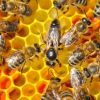 +23 +1
+23 +1While We Worry About Honeybees, Other Pollinators Are Disappearing
While We Worry About Honeybees, Other Pollinators Are Disappearing
-
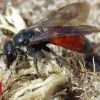 +4 +1
+4 +1Twenty one bee species in NI 'at risk of extinction'
A report blames the loss of habitats, pesticides and climate change for the decline in bees.
-
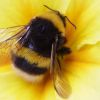 +18 +1
+18 +1Bumble bees give up sleep to care for young, even when they're not their own
Curiously, scientists found the insects cared for pupae who don't actually need to be fed.
-
 +26 +1
+26 +1Bee population recovering due to regenerative farming, producers say
Dairy farmers say that regenerative farming has brought back the bees and increased profits.
-
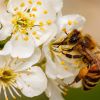 +9 +1
+9 +1Male bees blind their queen with their semen
New findings presented by the University of California, Riverside, demonstrate how male honeybees inject toxins during sex that cause temporary blindness in their mate. It is not a foreign concept that male insects have proteins in their seminal fluid that causes the death of other insect’s sperm. However, the function of blinding one’s mate is highly unusual.
-
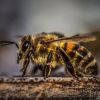 +35 +1
+35 +1France Is The First Country To Ban All Five Bee-Killing Pesticides
Most people might not be really that informed about how bees help humans and the environment. Bees are one of the insects that assist the pollination process. Pollination is how insects such as bees and butterflies transfer pollen grains from the male anther of a flower to the female stigma which leads to fertilization resulting to the production of a new seed.
-
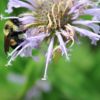 +9 +1
+9 +1Minnesota Will Pay Residents to Grow Bee-Friendly Lawns
The plump rusty patched bumblebee, Bombus affinis, once buzzed all across the eastern United States, the upper Midwest and parts of Canada. But today, the chunky critter is endangered, its population reduced by nearly 90 percent. In Minnesota, where the rusty patched bumblebee can still be found, officials have hatched a plan to help bolster the species’ population. As Jessica Leigh Hester reports for Atlas Obscura, the state wants to pay residents to turn their lawns into bumblebee havens.
-
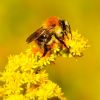 +31 +1
+31 +1Why Flowers May Be Partially to Blame for the Deaths of Wild Bumblebees
"We wanted to test this widely stated but largely untested hypothesis."
-
 +13 +1
+13 +1Morgan Freeman Is Now A Beekeeper: He Converts His 124-Acre Ranch Into A Giant Sanctuary To Help Save The Bee Population
Morgan Freeman is one of those famous people that is adored by both the young and the old. He is an actor, filmmaker, as well as director and he, is known for a lot of different roles that he played during his long Hollywood career, so it is difficult to keep track...
-
 +18 +1
+18 +1Minnesota program will pay homeowners to transform lawns into bee gardens as species inches closer to extinction
Minnesota lawmakers have greenlighted a new program to pay homeowners in the state to transform their lawns into bee gardens in efforts to counter the declining bee population.
-
 +14 +1
+14 +1Beekeepers call for banning of a large number of pesticides
Campaigners have handed in a letter to the Minister for Agriculture, Michael Creed, calling on him to support the banning of more pesticides which harm the bee population. The European Commission has already banned three pesticides because of their impact on the declining bee population, but campaigners want the commission to go further.
-
 +20 +1
+20 +1Morgan Freeman Converts His 124-Acre Ranch Into A Giant Bee Sanctuary To Help The Environment
Morgan Freeman is a lot of things. Apart from being one of the most renowned actors on the planet, the 81-year-old celebrity has time and again raised his incredible voice to call attention to a number of concerning issues. The star added yet another title to his illustrious resume as an actor, filmmaker, and director, in 2014 when he took on the label of a beekeeper. He decided to do so in order to help put an end to the dwindling bee population on the planet and do what he can to revive and conserve their presence on earth.
-
 +17 +1
+17 +1Bees are facing yet another existential threat
While soybean farmers watched the drift-prone weed killer dicamba ravage millions of acres of crops over the last two years, Arkansas beekeeper Richard Coy noticed a parallel disaster unfolding among the weeds near those fields. When Coy spotted the withering weeds, he realized why hives that produced 100 pounds of honey three summers ago now were managing barely half that: Dicamba probably had destroyed his bees’ food.
-
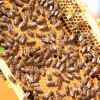 +12 +1
+12 +1World's First Insect Vaccine Could Help Bees Fight Off Deadly Disease
Bees may soon get an ally in their fight against bacterial disease — one of the most serious threats the pollinators face — in the form of an edible vaccine. That's the promise held out by researchers in Finland, who say they've made the first-ever vaccine for insects, aimed at helping struggling honeybee populations.
-
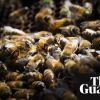 +23 +1
+23 +1Monsanto's global weedkiller harms honeybees, research finds
Glyphosate – the most used pesticide ever – damages the good bacteria in honeybee guts, making them more prone to deadly infections
-
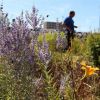 +12 +1
+12 +1Bees are dying at an alarming rate. Amsterdam may have the answer.
An unkempt stretch of tall grass, wildflowers and weeds in front of a train station doesn't look like much — but it may be crucial to solving one of the world's biggest environmental puzzles. While scientists around the globe have been sounding alarm bells over the decline of bees and pollinators crucial to the growth of crops, the diversity of wild bee and honeybee species in the Dutch capital has increased by 45 percent since 2000.
-
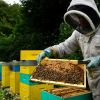 +28 +1
+28 +1France's ban on bee-killing pesticides begins Saturday
A ban on five neonicotinoid pesticides enters into force in France on Saturday, placing the country at the forefront of a campaign against chemicals blamed for decimating critical populations of crop-pollinating bees. The move has been hailed by beekeepers and environmental activists, but lamented by cereal and sugar beet farmers who claim there are no effective alternatives for protecting their valuable crops against insects.
-
 +12 +1
+12 +1Swarm of 20,000 bees attack New York City hotdog stand
Productivity came to a halt across New York City offices on Tuesday afternoon, as hordes of people eagerly followed the removal of 20,000 bees from a hotdog stand. The bees had swarmed the hotdog stand, a block south of Times Square, around 1pm. Thousands watched a Reuters livestream – the stand is located outside the news agency’s New York headquarters – and followed on Twitter as a police officer was called in to remove the bees. With a vacuum cleaner.
-
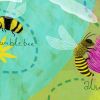 +10 +1
+10 +1Plan Bee: The Rise of Alternative Pollinators
Jim Freese grows apples, pears and cherries on 45 acres in the north-central part of this state, on sagebrush-studded land his grandfather bought in 1910. Walking among trees laden with shiny red cherries, Mr. Freese recalled that four years ago his trees were not producing well and his farm was financially struggling. Like many growers, he had been relying on rented honeybees to pollinate his cherry trees every spring, along with wild bees and other insects.
-
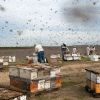 +17 +1
+17 +1The Super Bowl of Beekeeping
Every February, white petals blanket first the almond trees, then the floor of the central valley, an 18,000-square-mile expanse of California that begins at the stretch of highway known as the Grapevine just south of Bakersfield and reaches north to the foothills of the Cascades. The blooms represent the beginning of the valley’s growing season each year: Almond trees are first to bud, flower and fruit. At the base of the trunks sit splintered boxes — some marked with numbers, some with names, some with insignias — stacked two boxes high on a wooden pallet that fits four stacks.
Submit a link
Start a discussion




















